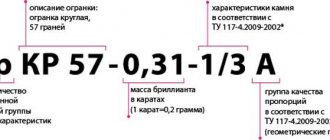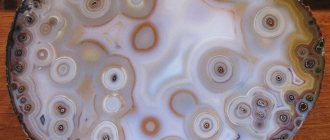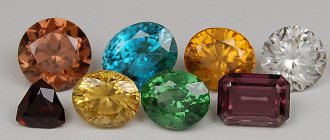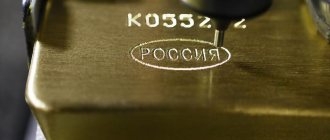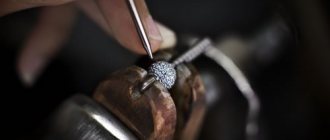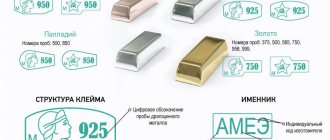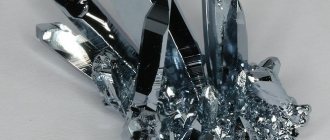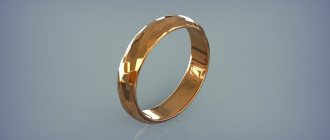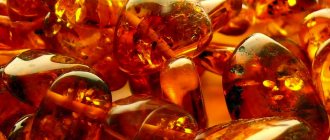What information does the tag contain?
Deciphering a tag on a piece of jewelry is not difficult. For all jewelry made of gold, silver or platinum, it must contain the following information:
- product name - ring, earrings, chain, pendant and other options;
- factory article number of decoration;
- size in the case of a ring and length for chains;
- type of precious metal - gold, platinum, silver and other jewelry alloys;
- sample (it should be on the decoration itself);
- weight in grams;
- barcode - indicates the legality of selling jewelry in a given jewelry store.
Starting from 2021, the Government of the Russian Federation is going to introduce additional mandatory labeling of jewelry. This will include applying a two-dimensional barcode to the tag. Buyers can also decipher the information from the square using a simple smartphone application. Based on the data obtained, it will be easy to understand how and from what the decoration was made.
Important! Before reading the tag on any piece of jewelry, make sure there is a seal on the “string” that secures the paper. Label sealing is a mandatory condition for the production of any jewelry in Russia.
Van Cleef&Arpels
The history of the Van Cleef & Arpels jewelry house usually begins not with the official date - the opening of the boutique at 22 Place Vendôme and the registration of the brand, but with the registration of the marriage between the cutter Alfred Van Cleef and Estelle Arpels, the daughter of a gem dealer. For accuracy and completeness of the picture, we will name both dates: the wedding took place in 1896, and the jewelry store opened 10 years later, that is, in 1906. But there is another year that preserves the memory of an important event for the brand - 1938! It was this year that the Van Cleef & Arpels brand was officially registered - a rhombus with a Vendôme column.
What information does the jewelry insert tag contain?
According to the domestic standard “Jewelry inserts. Information Disclosure Rules" STO 52818945-1-2016, developed by the Association "Guild of Jewelers of Russia", a certain classification of jewelry gems is used on the tags.
In the same set of rules there is a decoding of the definition of what refers to a jewelry insert - this is any cut stone made from natural or artificial materials, intended for use in jewelry. Uncut crystals only qualify as inlays if they are actually set into the jewelry.
Disclosure of information falls on the shoulders of sellers. The goal is to fully inform the buyer about the authenticity and origin of the insert. “Transfer” of information to the end consumer occurs in two ways: in writing in commercial documentation or on product labels.
According to the rules, the following information about inserts on the jewelry tag must be indicated:
- insert name;
- information about the type of refining of precious gems: the method of processing that influenced the physical and chemical properties of the stone;
- classification characteristics of a specific type of stone;
- information about the origin of the artificial insert;
- weight and number of stones in the decoration.
At the same time, the weight of natural gems is indicated in carats; the refining method has an abbreviation that is accepted throughout the world. And for artificial stones, only the name and color are allowed to be indicated (indication of the processing method is not necessary).
Marking of the type of processing of natural gems
Wondering how to correctly read a jewelry tag with a natural gemstone? Pay attention to the type of processing. It must be indicated for real gems. When there is no letter designation, you have an artificial insertion option.
Among the common and generally accepted methods of refining are:
- Trade code “B” indicates refinement by bleaching. This is the change or removal of natural shade using chemicals or physical processes, including targeted exposure to light rays.
- Coding "D" - coloring. A method of beautification for the purpose of changing color by applying paint or dyes to or within the stone. This method also includes changing the tone using the “sugar/acid” process.
- The letter "F" indicates the crack filling process. They are “filled” with a special substance or glass, resin, or plastic to obtain a smooth gem without defects, strengthening its structure.
- The designation “H” indicates heat treatment using heating in a special oven or other methods.
- The combination of the letters “HPHT” indicates the processing of the stone under high temperatures and pressure in order to change the shade of the stone.
- Trade code “I” refers to the impregnation of the gem with oil, wax, resin, polymers or plastic. The goal is to discolor the stone to replace its tone with a different one.
- The letter “L” stands for laser drilling. This is laser burning of a channel between the surface of the diamond and a dark inclusion in order to eliminate this defect or replace it with another less noticeable color.
- The Latin "O" indicates oiling, which is necessary to reduce the visibility of cracks.
- The “R” code indicates artificial irradiation to change the color of the gem.
- Trade code “U” is a variant of enhancement using diffusion to change color by heating the gem in a chemical environment.
- The Latin "W" indicates waxing - the application of colorless wax or other similar material to the surface of the stone or near-surface layer.
For example, the decoding of a diamond jewelry tag, which looks like this: “Diamond treated (HTHP) Kr 57A 3/3-1-0.25 carats,” says that the stone has undergone heat treatment and refinement using high pressure. The weight of the stone is 0.25 carats. And the numbers 3/3 indicate transparency (purity of color). Kr 57 - the number of faces in a round gem.
With the introduction of digital jewelry tagging in 2021, the tag will be much easier to read. Smartphones, using applications, will tell you everything about the place of extraction and the type of processing of the gem. They will also tell you where to buy a laser machine for marking gold and whether the sample on the metal corresponds to the real amount of gold or silver in the alloy.
Fabergé
Although the Faberge team in its best years consisted of more than 500 craftsmen who worked on every piece of jewelry in detail (from packaging to precious stones), Carl Faberge himself kept all orders under control. Although historians have no evidence whether he ever personally created jewelry delights. But Carl Faberge definitely had the mark. Moreover, in several versions - St. Petersburg and Moscow. Items created in the northern capital bore the Faberge mark, written in Cyrillic and without initials. Moscow production put the mark “K. Faberge”, complementing it with a double-headed eagle. Items intended for sale in Europe were branded with the Latin alphabet. Masters who worked in St. Petersburg also had their own marks at their disposal, which sometimes replaced the master’s mark. Occasionally, items were left without identification marks. The reason is simple - there is no space on the product or its special fragility.
Color
Colorless stones
Transparent stones are considered the most valuable. Colorless diamonds are divided into nine groups. The first group includes absolutely transparent stones, and the ninth group includes brownish or visible yellowish stones. Stones of groups 3–5 are considered popular. There is also a letter-based international classification, in which the color of stones is distributed from D to Z.
It is impossible to visually notice the difference between the stones of the third and fourth, as well as the fourth and fifth groups. At the same time, the difference in price is quite noticeable. Therefore, when the question is which diamond to choose, the decision depends on whether you are willing to overpay.
Colored stones
The cost of colored diamonds is affected by the brightness and saturation of the hue. Most often, colored options are cheaper than colorless ones, but there are exceptions. Thus, stones of the so-called fancy colors can be more expensive than the most transparent samples.
Diamond weight designation
The weight of a diamond is measured in carats. May be designated by the letters “kar” (if the product is made in Russia) or “ct” (international designation). There may not be a letter designation on the tag. The carat weight of a stone can only be indicated by numbers in the middle or at the end of the code.
Depending on their mass, stones can be divided into three groups:
· small – up to 0.29 ct;
· medium – 0.3-0.99 ct;
· large – over 1 carat.
Gem connoisseurs value diamonds weighing from 1 carat, so the price of products with such stones will be high. Most often, jewelry with medium-sized diamonds is found. In our example “3br Kr57A-0.47-3/5” it is indicated that the diamond weighs 0.47 carats, that is, it is a medium-sized stone.
Authentication Tips
Some more useful information for those who decide to test a rough diamond on their own:
- You can verify the authenticity of the purchased stone in this way: lubricate its surface with vegetable fat and glue it to a window or other glass surface. A real diamond will not fall off, but an artificial one will immediately fall down. The described method is applicable only to unmounted minerals. If the diamond is in a ring or earrings, it will not stay on the glass and will fall under the weight of the metal.
- There is a common myth among people that a high-quality natural diamond is invisible in water. It is not true. No matter how transparent a diamond is, it will still be visible because its density is higher than that of water. But the dive test is still not useless. By lowering the stone into a glass of water, you can check its integrity. If it is glued together from two stones, then the border of the joint will be visible.
- A magnet will help you distinguish a synthetic diamond from a natural one. 90% of artificial crystals are attracted to it.
Only an independent gemologist can accurately distinguish a real diamond from a cheap synthetic fake and support his conclusions with a certificate. This examination is carried out in a special gemological laboratory. If we are talking about a stone weighing 1 carat or more, then it is better not to take risks and turn to professionals.
Modern imitation diamonds copy diamonds so accurately that an ordinary person without special training and expensive equipment will never detect a fake. There are different ways to find out whether a stone actually is an expensive diamond or an ordinary piece of glass, but most of these methods do not provide a 100% guarantee.
How to distinguish a diamond from a fake at home
To independently verify the authenticity of a stone, you can use several proven home methods, some of which are also applicable in a jewelry salon.
To get an accurate result, arm yourself with a flashlight and sandpaper. Prepare a magnifying glass with at least 10x magnification. You will need a piece of soft, clean and dry cloth, water and vegetable oil.
It is better to carry out a home examination on a sunny day.
Water
Using water, you can instantly find out whether or not a diamond is set in a ring, earrings or other purchased jewelry. Sprinkle a couple of drops of water onto the top flat surface of the stone. Poke them with a needle. If the drops have not changed, then you were not deceived. On the surface of artificial stones they will disintegrate into small fractions.
To get a more visual picture, take vegetable oil rather than water, put it in a pipette and drop it onto the stone. If the drop remains intact, this will prove the authenticity of the mineral; if it splits into parts, this is a negative sign. They sold you a fake under the guise of a diamond.
Breath
Natural diamonds do not become covered with “perspiration” even at high humidity. Knowing this feature, you can instantly check the stone not only at home, but also in the store before purchasing the product.
To do this, wipe the crystal with a soft flannel cloth and then breathe on it for 2-3 seconds. If it remains dry and shiny, it is a diamond. The fake will fog up, become damp and dull.
Price
Cost is an essential parameter for evaluating a diamond.
Diamonds are the most expensive gemstones. They can't be cheap.
If you are offered an inexpensive diamond ring (at a discount), do not give in to such temptation, otherwise you will invest your money in a worthless thing.
The price of a diamond is calculated from such indicators as the type and quality of cut, carat weight, clarity, color rarity, and current prices on the world market. The cost of such stones directly depends on the size. A 1-carat diamond costs 15-20 times more than a scattering of tiny diamonds with the same total weight.
Scratches
Diamond is a super-strong mineral. It is impossible to scratch it. To ensure that a piece of jewelry is a real diamond, rub the surface of the stone with sandpaper or corundum. If there are no traces left, this is truly the “king of stones.” If roughness or scratches appear on the surface, this is just a skillfully executed fake.
Use this method very carefully to avoid scratching the gold setting of the jewelry. Do not test the hardness of a stone using another diamond; it will easily damage its “brother.”
Prohibited Methods
If you don’t mind ruining a stone imitation of a cut diamond, then you can determine the authenticity of a diamond using cruel methods:
- Keep the stone in the flame of an open fire for 3-4 seconds. If it stays the same, it's a diamond. Moissanite will change color to green, and the original color will not be restored. It will be hopelessly spoiled.
- Drop the crystal into hydrochloric acid. If it is a linden tree, white streaks will form on it. It will no longer be possible to remove these marks. A real diamond will not suffer at all from such testing.
- If you suspect zirconium, lightly run a diamond pencil over the stone. This tool will leave a distinct mark on the semi-precious stone.
When performing this test, do not apply excessive force, otherwise the stone will crack.
The authenticity of a diamond can only be determined using such barbaric methods at home, after it has already been purchased. In a jewelry salon, no one will allow you to throw it into acid or burn it in fire. These testing methods are not suitable for set stones (due to the risk of damaging the jewellery).
General rules for purchasing jewelry with precious stones
Jewelry with precious stones has certificates and tags. If they are not there, it is better to refuse the purchase. Most likely they will try to sell you a product with fake stones or imported into Russia illegally. What should you pay attention to?
First of all, on the hallmark of the assay office, which can be viewed through a magnifying glass. It is applied to products made of precious metals and contains the hallmark number and the code of the chamber itself. The absence of a designation indicates that this is a counterfeit or smuggled product.
Check for a sealed tag. It should be on every accessory and contain complete information about the product. A conscientious manufacturer will indicate the weight, cost, presence of inserts and their characteristics, and sample number.
The gemstone is always accompanied by a certificate that duplicates the information on the tag. In addition, this document will indicate the features of the stone: the presence of chips, cracks, inclusions. It is on the basis of the certificate that one can judge the authenticity of diamonds and other stones. If the seller cannot provide you with this document, refuse to purchase.
